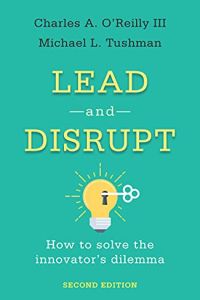This new edition of Charles O’Reilly and Michael Tushman’s 2016 original, offers expanded, fresh insights into how to build an “ambidextrous” organization: one that continues to extract profits from existing lines of business while simultaneously developing new ventures that eventually displace the old. The authors use cautionary lessons from Blockbuster, Sears and Kodak to demonstrate how fraught this balancing act can be. However, their description of firms that get it right, including Amazon and IBM, offers your business a road map to survive and thrive in turbulent times.
Firms that cling exclusively to past successes are unlikely to survive a disruptive business landscape.
Before World War II, US firms’ tenure on the S&P 500 averaged almost a century. Today, that span has fallen to less than 15 years. In a time of faster change and disruption, companies must consistently revamp to survive – but very few do so. Ironically, most firms’ success holds them back. They may start out as disrupters and become wildly profitable game changers; but at some point, they fail to commit to the ongoing change necessary to continue thriving.
For example, Blockbuster did not act in time to move from physical stores and rentals toward direct mail and streaming. Even the early successes of Netflix – which had only a small fraction of Blockbuster’s resources in 2002 when it went public – were enough to shake the market leader’s standing. Blockbuster collapsed in 2010. Netflix, meanwhile, has renewed itself several times, demonstrating a willingness to cannibalize thriving businesses of its own to go after the next thing.
Ambidextrous organizations...
Business professors Charles A. O’Reilly III and Michael L. Tushman teach and conduct research at Stanford and Harvard universities, respectively. Each has earned a Distinguished Scholar Award from the Academy of Management.




















Comment on this summary